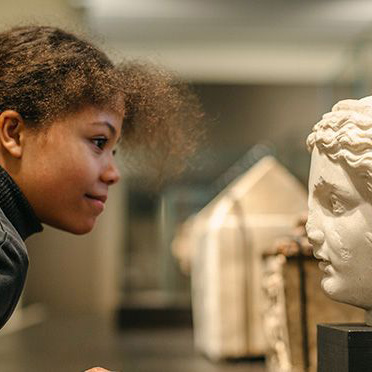The Rebellion of the Huicholes against assimilation
The Huichols opposed the state and achieved a focus on their own culture and identity. They govern their own school and decide much of the content of the teaching. The school is a place where their cultural distinctiveness is central, and they are now satisfied that—to a greater extent—they can manage their own development.
The school
Tatutsi Maxakvari — grandfather deer — is an expression for resistance against the mission, as well as pressure discrimination by the Mexican state. In the village San Miguel the Catholic Franciscans ran a mission for a long period. At that time the Franciscans forbid the Huichol from holding their traditional celebrations.
In 1995 was a turning point for the residents of Tateikita; the mission wanted to take control over the hostel, as well as primary and middle school, which were supported by the state.
Education on their own terms.
After a long struggle the Huichol received the right to give their children the education that parents and the local community wanted them to have. The school has been one of the symbols of the resistance struggle and cultural pride for Huichol.
The teachers are recruited from their own group and the teaching plans at the autonomous school are built on traditional values combined with subjects from the national school system. The curriculum reflects the crossroads between the traditional and the modern that is so clear in the Huichol community.
Language and other living traditions
Wixarika, the Huichol’s own language, is used both at school and at home. This is important in order to pass on and strengthen the culture and language. At school the children learn how they should carry out commands from the gods and that this is the actual foundation of their existence. They also learn about impor- tant rituals, such as Tatei Neixa and the use of peyote in rituals.
The cosmology of the Huichol is maintained through rituals and celebrations. The rituals focus on the people’s relationship the world of the gods and nature. Like many Central Ameri- can indigenous people, the Huichol live prima- rily off of corn and they have a close and religious relationship to the corn plant. “It is our spirit, and it is why we have celebrations. Because always, always is it there in the celebrations,” says Augustin, who is the cultural teacher at the Huichol school.
The Huichol’s identity is connected with corn
The Huichol believe that like people, corn, has a soul and spirit. The exchange of gifts using corn is central in many rituals. “If we lose the corn, we will no longer be Huichol, we will no longer have celebrations,” says cultural teacher Augustin.
Rituals, values and social life
Among the Huichol, as with all groups, rituals can illustrate values and create balance in social life. In their ritual Tatei Neixa, children are the focus. They sit together with their parents and grandparents in a large circle outside of the temple. The children exchange corn beer (sacred drink that is received from the gods), other food and gifts with each other.
Tatei Neixa
During the ritual, Mará kameen sings the whole day about the origin myth, which tells about when their ancestors, gods went to Wirikuta—the sacred land. Thanks to the school Tatutsi Maxakvari, the Huichol children learn about these and other local traditions.
The ritual begins at night before the main part of the ritual starts. Mará kameen sings with grandfather fire (Tateiwari) throughout the night and prepare the celebration with wishes to the gods.
The grandparents, particularly the grandfathers, are important in Tatei Neixa as advisors and bearers of knowledge. The always sit nearby and now and then they carry the smaller children or go hand in hand with the elderly around in the circle.
Tamales, tortillas, oranges, divided in two, watermelon in small bits and sometimes chunks of homemade cheese are on the trays that the kids go around with and pass out during the all of the children who are in the ceremony. They sit in a ring and the participants cross the circle when they pass out, finally until everyone has given and received one time. The children drink from the brew; they have small cups and do not receive so much. However, it is not unusual that the drink affects them.
One always leaves a tortilla or tamale on the tray. This symbolizes the seed that should not be eaten but taken saved. This is a core value for the Huichol. This is practiced in all ceremonies: the gifts are received, corn beer is drunk and a tortilla is always placed back in the plate when it is returned.
“The seed must be cared for; it will be sown again and it ties both the giver and the receiver to each other and to the corn,” says anthropologist Håkon Rokseth, who researched among the Huichol in 2004. This interaction shows and manifests important cultural values and obligations. “The ritual strengthens com- munity and gives cultural knowledge to each participant,” according to Rokseth.










